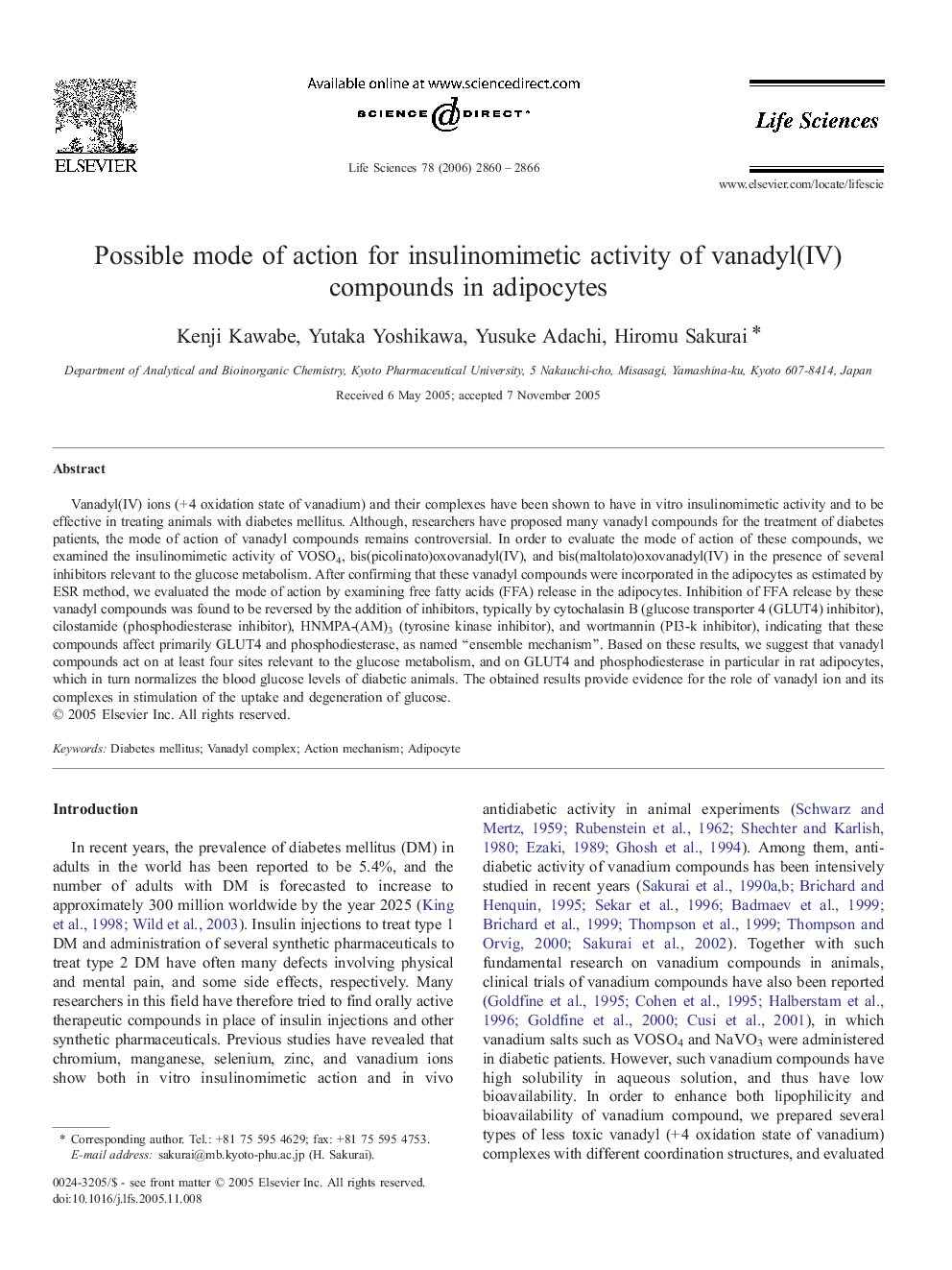| Article ID | Journal | Published Year | Pages | File Type |
|---|---|---|---|---|
| 2554932 | Life Sciences | 2006 | 7 Pages |
Vanadyl(IV) ions (+ 4 oxidation state of vanadium) and their complexes have been shown to have in vitro insulinomimetic activity and to be effective in treating animals with diabetes mellitus. Although, researchers have proposed many vanadyl compounds for the treatment of diabetes patients, the mode of action of vanadyl compounds remains controversial. In order to evaluate the mode of action of these compounds, we examined the insulinomimetic activity of VOSO4, bis(picolinato)oxovanadyl(IV), and bis(maltolato)oxovanadyl(IV) in the presence of several inhibitors relevant to the glucose metabolism. After confirming that these vanadyl compounds were incorporated in the adipocytes as estimated by ESR method, we evaluated the mode of action by examining free fatty acids (FFA) release in the adipocytes. Inhibition of FFA release by these vanadyl compounds was found to be reversed by the addition of inhibitors, typically by cytochalasin B (glucose transporter 4 (GLUT4) inhibitor), cilostamide (phosphodiesterase inhibitor), HNMPA-(AM)3 (tyrosine kinase inhibitor), and wortmannin (PI3-k inhibitor), indicating that these compounds affect primarily GLUT4 and phosphodiesterase, as named “ensemble mechanism”. Based on these results, we suggest that vanadyl compounds act on at least four sites relevant to the glucose metabolism, and on GLUT4 and phosphodiesterase in particular in rat adipocytes, which in turn normalizes the blood glucose levels of diabetic animals. The obtained results provide evidence for the role of vanadyl ion and its complexes in stimulation of the uptake and degeneration of glucose.
